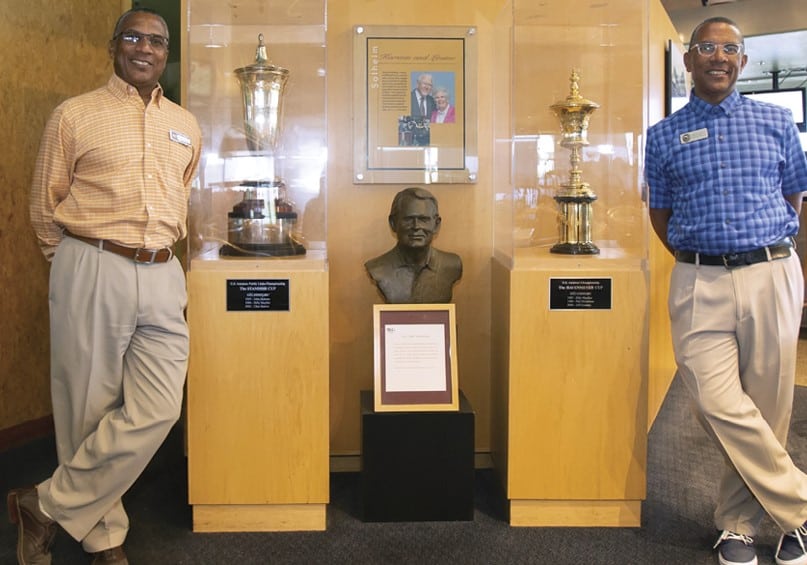This article was authored by Henry DeLozier for Golf Course Industry magazine.
Golf is a service business that attracts people who have a passion for the game and its values. Identical twins Daryl and Derek Crawford were born and bred for the job.

“Our father was a skycap at TWA in Phoenix and taught us the importance of service to others,” Daryl says. “He passed that along to us.”
He also told his sons they would be defined by their actions, not the color of their skin. A father’s guidance has proved invaluable over the course of his sons’ lifetimes and three decades in the golf business. Their story is one more example of the disparate ways golf can serve as the foundation for lives that are well lived.
The Arizona Golf Association’s 2020 Updegraff Award, given to Derek, an executive with Phoenix-based Gibson Golf Management; and Daryl, the general manager at Papago Golf Course in Phoenix, is only the most recent example. The award, named for Dr. Ed Updegraff of Tucson, a longtime supporter of amateur golf in Arizona, is earned by those whose actions exemplify the spirit of the game.
Golf was an early influence in the twins’ lives. Growing up, they were like most little guys, playing whatever sport was in season. They were introduced to golf at a municipal course in Phoenix and soon became fixtures. “We liked being at the golf course and were always looking for reasons to be there,” Derek remembers.
They began to compete as teenagers, and that’s when they met Bill Dickey, a former winner of the Updegraff Award, and other members of the Desert Mashies, a Phoenix-based group of minority golfers who help young golfers connect with the game. “Bill and Alice Dickey embraced us as family and always helped us when we needed it,” Daryl says.
They played on the first golf team at St. Mary’s Catholic High School in Phoenix and walked on at Arizona State. Good players and enthusiastic competitors, they were attracted to the game’s attributes and values. Accountability, striving toward a goal and staring down adversity or disappointment were part of their DNA.
They worked at courses in the Phoenix area, first in bag rooms, where they refined their service skills, and later in management positions with increasing responsibility. Soon they were being recognized as role models, especially for other young people of color.
In the 1990s, they both left the club life to work as PING tour reps on the men’s and women’s European tours. They became trusted friends and suppliers to the some of the world’s best golfers.
For Daryl and Derek, it all seemed a natural progression.
“We did as our parents taught us, to listen to and learn from good advice,” Derek says. “And we never lost the joy of playing the game.”
“They were brought up in the game and continue to grow as business leaders and all-around golf ambassadors,” said Phil Green, COO and Principal of OB Sports Golf Management, which manages the Papago course where Daryl is the general manager. “Their love for golf, years of experience and strong work ethic have served them well over the years, and they haven’t forgotten to give back along the way. Their story is a great example of the way golf can become the foundation of success.”
As African-Americans, Daryl and Derek stand out in most golfing circles, where black and brown faces are significantly underrepresented. But it’s their actions, not their race – as their father predicted – that have defined them.
“We never felt anyone was trying to stop us or hold us back,” Derek says, as if anyone could.
“We have been blessed,” Daryl adds.
As have we all through their actions and their friendship.



